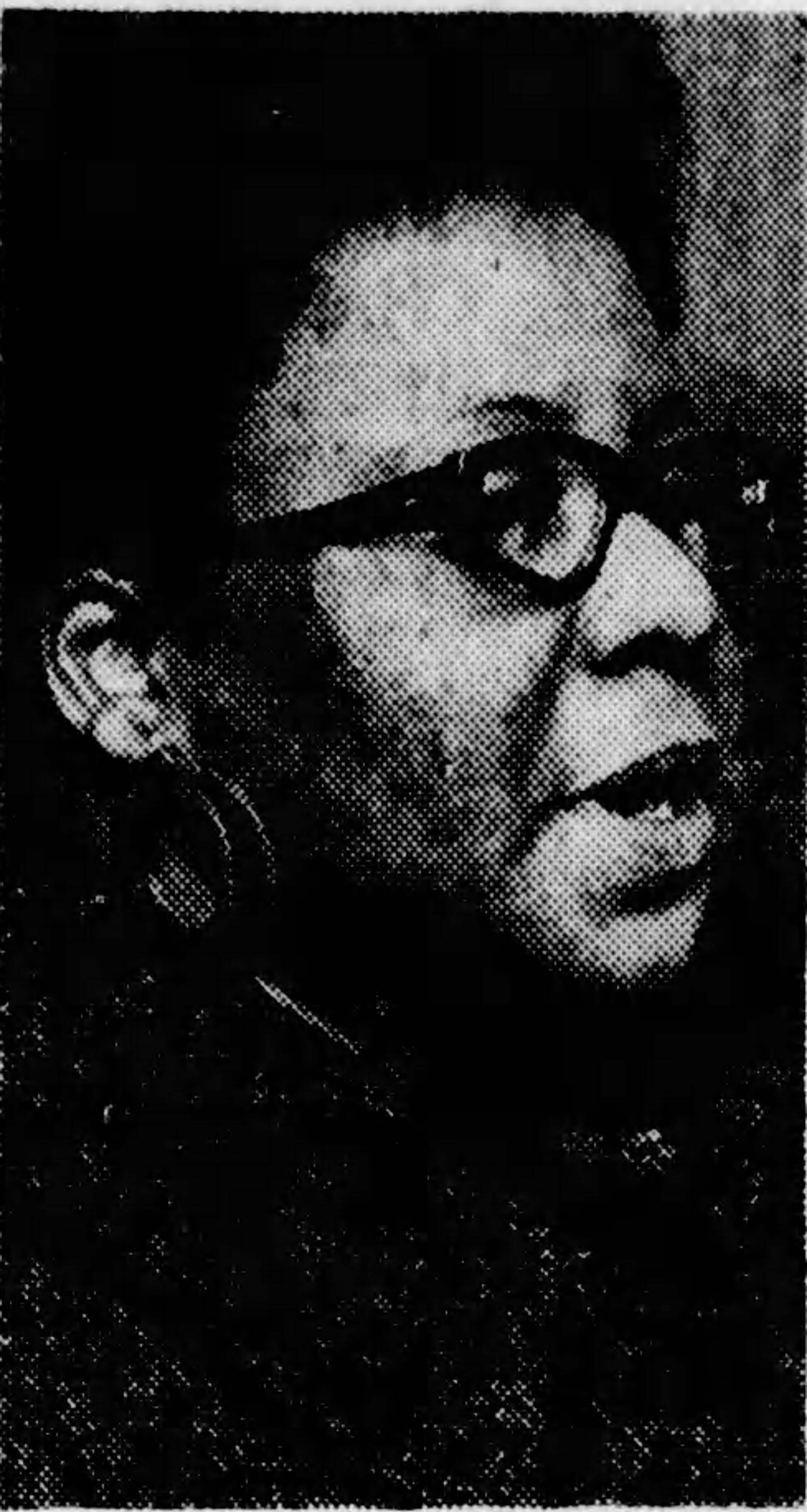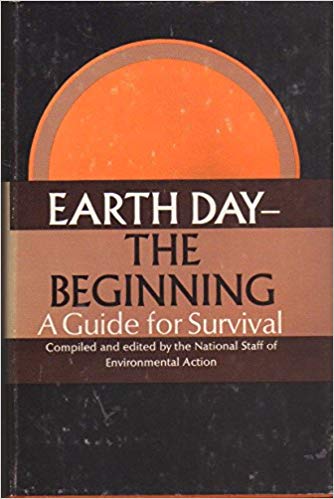Black Survival: Mainstream Environmentalism's Missed Opportunities
Rob Gioielli
April 22, 2019
Why is environmentalism so white?
It's not that African Americans, Latinx Americans and other people of color don't care about the environment. Far from it. But in the United States, white people have dominated the politics of environmentalism for decades. They have dominated environmental institutions, of course, but also environmental issues. The country's biggest environmental organizations continue to be bastions of well-educated, middle-class whites that often focus on the concerns of those groups: wilderness conservation, international wildlife and broad, technocratic reform efforts.
In the last decade, those groups, and environmentalists in general, have started to shift their focus. Hurricane Katrina, the water crisis in Flint, Michigan, and the Standing Rock protests have all pushed the environmental concerns of the historically marginalized closer to the forefront of the agenda, as has the stark reality that those same peoples are bearing the brunt of climate change.
Despite this progress, too often Americans think of environmentalism as a "white" movement. To move past this, we need to start telling a different story, one that fully integrates the concerns, interests and activism of people of color into the story of environmentalism. One way to do this is to look at the missed opportunities and crossed paths, when alternatives for a more inclusive and expansive environmental movement, focused on justice and equity as well as amenities like clean air and water, reared their head.
One such story occurred in St. Louis in April 1970.
"Not me, prof, I would rather spend my time doing something that will help my black brothers such as getting them jobs, education, and housing. [Ball up fist and raise it high]"
This is the response from Will, one of the characters in "Black Survival: A Collage of Skits," when his professor asks him and a group of other black students if they want to help the professor organize "a movement against the environmental ills in the black neighborhoods." Will and the other students dismiss the professor, arguing that "it's a cop-out from dealing with the real problems which are education and employment… I'll let you and whitey take care of that."
I'll let you and whitey take care of that.
"Black Survival" was performed twice during April 1970, as part of local Earth Day celebrations. It was developed by Freddie Mae Brown and the St. Louis Metropolitan Black Survival Committee, a short-lived local environmental group. The committee was organized by Brown, a social worker, with assistance from Wilbur Thomas, a scientist at St. Louis's Washington University who worked with Barry Commoner, the well-known biologist and environmentalist.
Freddie Mae Brown, St. Louis Post-Dispatch, April 26, 1970.
Thomas had begun working with St. Louis's poor and black communities about a year before, as part of an outreach effort funded by the Center for the Biology of Natural Systems, Commoner's lab.1 Working with community groups and local public health and welfare agencies, he provided scientific expertise to describe and document environmental and public health problems that many lived with on a daily basis.
Thomas played the professor in the skits, thus mirroring his real-life role as a technical advisor and liaison who can name and diagnose the real experience of pollution and poison. After the students reject the professor's request to assist with environmental organizing, the remaining sketches show the students, who live in a college town called "Pleasantville," discussing how they all actually face a lot of environmental problems in their own communities.
Everything is so dull and dreary – there are no flowers, trees, and grass. There are even no birds to sing.
"The fact is I'm not going home. I'll be right here, during the break. I thought it would be nice to stay here in Pleasantville and get the full worth of spring for a change. You see, I live in the city and not such a good part at that. Spring there is no different than any other time of the year. Everything is so dull and dreary – there are no flowers, trees, and grass. There are even no birds to sing. But then who could blame them for not wanting to live in that neighborhood. We're crazy to live there ourselves…" (Ruth, a student)
"No, you know I have this asthmatic condition. It doesn't bother me too much up here in Pleasantville where the air is clean but back home in the city I suffer all the time. So I'm staying with the fresh air." (James, a student)
Quickly the students realize that black people do face environmental problems, they are just different from those that white people are concerned about, having more to do with the environmental inequalities of the postwar American city. They go across campus to track down the professor and to offer their assistance. He tells them environmental experts "don't know all of the problems, and are not statistically sure of the ones we do know about." The students tell him to "take care of the egghead stuff" and they will start the protest movement.
The sketches went on to present a series of vignettes where black families face health problems caused by rat infestations, air pollution and lead paint poisoning. In the final skit, a boy's mother is being taken the hospital, from health problems caused by a degraded urban environment. In response, the boy delivers an impassioned soliloquy that firmly connects environmental and social justice issues.
Our rich white brothers… aren't concerned about poor people being unemployed, they don't care about the lousy schools. Or cops who whop the heads of the poor…
"How long must we wait before the world is free of pollution! Must we first stand on the brink of extinction, and be devoured by rats and cockroaches and wars that never end. Must we continue to be divided one from another by leaders who seek only political gain. Leaders who seek to sustain their own lives and snuff out the breath and life of the people. O God if you are truly alive, then hear the cry of the people. For our rich white brothers deny the black, the Indian, the Chicano, and the poor, food to eat… [They] aren't concerned about poor people being unemployed, they don't care about the lousy schools. Or cops who whop the heads of the poor, and they don't care about the expressways that displaced our neighborhoods and the problems of pollution they bring in. As a matter of fact, they never cared at all about the problems until they started calling them environmental problems and saw that the mess in the food, water, and air wasn't just killing poor folk but was killing them too."
The text of "Black Survival" can be pedantic, and the dialogue quite clunky. But it is a fascinating document. The framing of the skits, with the professor and doubtful students, reveals that even at the moment of the first Earth Day, many African Americans considered environmentalism to be a white movement, but not necessarily a white issue. The students' realization that they personally face and experience environmental harms, along with the intervening skits, was designed to help skit viewers reinterpret what were often considered issues of poverty, housing or community health, broadly the problems of "the slums," as environmental issues.
"Black Survival" appears to only have been performed twice. The primary reason it is still remembered is because it was included in Earth Day – The Beginning, a collection of speeches and performances that was published nationally by Environmental Action, Earth Day's primary organizing group.
Environmental Action, Earth Day – The Beginning (1970).
The Black Survival Committee was also short-lived, but it does represent an important moment of urban environmental ferment in St. Louis. In the late 1960s and early 1970s, a group of black activists and scientists worked to educate the community about environmental problems caused by severe metropolitan inequality and discrimination, particularly childhood lead poisoning. In addition to Brown, the other primary activist was Ivory Perry, a who played an important role in the St. Louis civil rights movement before becoming a social worker who focused on housing issues, and then lead paint poisoning. Thomas served as the connective tissue, giving the activists not only a language to describe lead poisoning, but more importantly, access to a lab and research assistance.
"Black Survival," and the movement it was connected to in St. Louis, represent a key moment of missed opportunity for American environmentalism. African Americans were ready and willing to speak to the environmental problems of the American city, ones that had more to do with injustice and inequality than general social critiques or suburban anxieties. But, despite moments of inclusion such as in Earth Day – The Beginning, their concerns were pushed to the side by the emerging movement.
As we seek to build more inclusive, and just, environmental politics in the twenty-first century, we must also resurrect those moments from the twentieth where we can see a robust and alternative environmental tradition.
Rob Gioielli is associate professor of history at the University of Cincinnati. He is the author of Environmental Activism and the Urban Crisis: Baltimore, St. Louis, Chicago and is currently working on a book about how urban racism is one the primary causes of climate change.
Notes
-
Largely forgotten outside of academic circles, Commoner was a key environmental writer and thinker during the 1960s and early 1970s, and also one of the most prominent to connect environmental issues to social justice. See Michael Egan, Barry Commoner and the Science of Survival: The Remaking of American Environmentalism (Cambridge: MIT Press, 2009). ↩
Citation
Rob Gioielli, "Black Survival: Mainstream Environmentalism's Missed Opportunities," Enviro-History.com, April 22, 2019, http://Enviro-History.com/black-survival.html.



